Establishing digital tools to support circular construction
To support the transition to circular construction, decision makers and built environment stakeholders need to have access to tools that can help turn theory into practice. This includes tools that provide real time data on material availability, illustrate city level planning impacts, or detail project case studies. High quality and user-friendly digital tools can support professional knowledge and expedite acceptance and adoption of circular construction.
To help meet this need, CIRCuIT’s project partners developed five online tools, hosted on their Circularity Hub, to support the mainstreaming and adoption of circular construction practices. These tools are the Material Reuse Portal, Circularity Dashboard, Circularity Atlas, Citizen Engagement Portal and Circular Economy Wiki.
The five tools enable stakeholders across the value chain to extract knowledge and insights at the city-level. These insights support dialogues, collaboration and market mechanisms across the supply chain in the city. Tools can also be a novel way for cities to increase engagement on circular construction issues with a wider audience, introducing the benefits of circular construction to city residents.
Overview of the tools on the Circularity Hub
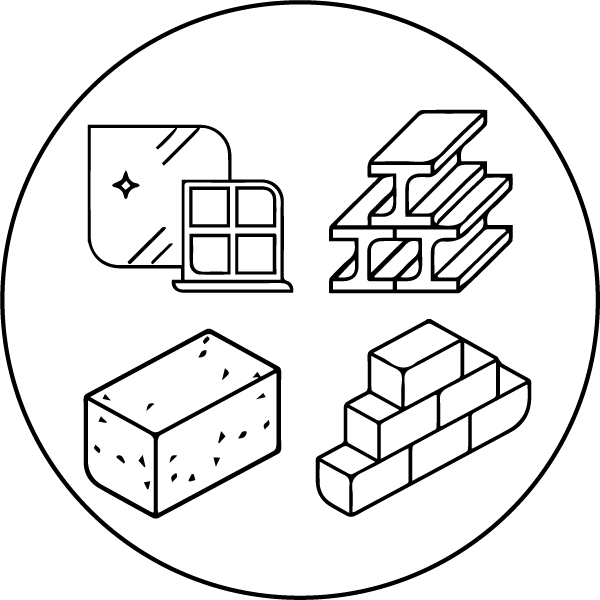
Material Reuse Portal
The Material Reuse Portal brings together listings of surplus construction materials from a range of online material marketplaces onto one platform – making them simpler to source.

Circularity Dashboard
Using circularity indicators, the Dashboard introduces a framework to capture a city’s, region’s or country’s circular economy capability and performance so professionals can compare and contrast.

Circularity Atlas
The Atlas is an interactive map that allows policy makers and urban planners to easily view and analyse circular economy data and other relevant data for a whole city.
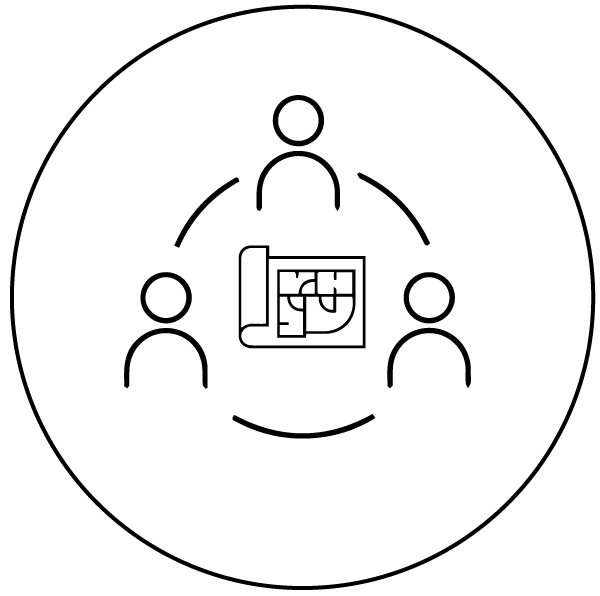
Citizen Engagement Portal
This website and augmented reality app showcases circular construction in existing buildings and makes circular construction approaches more accessible to the public. This can support dialogues in the city around the benefits of adopting circular economy principles.

Circular Economy Wiki
This website for built environment stakeholders features articles, guidance and definitions for circular construction, with the aim of building a common understanding and spreading awareness of circular economy practices in the construction industry.
A close look at the digital tools
Material Reuse Portal
 The current construction process is wasteful. Construction projects usually require large amounts of new materials that are downcycled or landfilled long before the end of their technical life span when the building is retrofitted or demolished. Removing materials from buildings in such a way that they can be reused is possible and there is growing interest in applying reused construction materials to new buildings. However, due to the long timelines of construction projects to reuse materials effectively and at scale there must be a way to see the future demand for reused construction materials alongside the future supply of reusable construction materials.
The current construction process is wasteful. Construction projects usually require large amounts of new materials that are downcycled or landfilled long before the end of their technical life span when the building is retrofitted or demolished. Removing materials from buildings in such a way that they can be reused is possible and there is growing interest in applying reused construction materials to new buildings. However, due to the long timelines of construction projects to reuse materials effectively and at scale there must be a way to see the future demand for reused construction materials alongside the future supply of reusable construction materials.
In most cities, material marketplaces do exist. These marketplaces show the materials that are currently readily available for use, and they do not usually operate at the scale necessary to mainstream secondary material use. Cities can help tackle this problem by establishing a platform that makes it easier for built environment stakeholders to view, buy and sell reusable or recycled building materials from across many different platforms, aggregating data from across the region.
About the tool
The Material Reuse Portal (MRP) is an online tool that features listings of surplus or reusable construction materials from multiple marketplaces to create a single place where reusable materials can be found. It’s free to use and brings together useful information from different sources in one site.
The prototype was designed and built for London and select surrounding regions. But it can be easily adjusted to incorporate data from material exchange platforms in any city.
The MRP collects data about the types of items that are being searched for and listed on exchange platforms. It also provides useful advice and information on the circular economy and the reuse of construction materials.
How the tool supports circular construction
Provides users of the MRP with comprehensive information about the reusable materials currently available in their city.
Gives users who wish to sell or donate reusable materials the opportunity to reach a wider audience.
Increases awareness and use of existing construction material marketplaces available in a city.
Increases understanding of the availability and demand for reusable materials by collecting data on the types of items being searched for and listed on material exchange platforms.
Lessons learned during development
The platform aggregation model, where multiple platforms are combined, is of great interest to the built environment industry.
There is interest in further integrating real-time demand signals to the platform to build the material supply pipeline into the future to reduce the time spent searching for a buyer or storage.
Not all material portals are easy to connect to an aggregator model because of technical reasons. Some smaller platforms also have few staff members. Additional support is needed to ensure all types of platforms can be linked up with an aggregator reuse portal such as the Material Reuse Portal.
Circularity Dashboard
circuit-project.eu/circularity-dashboard
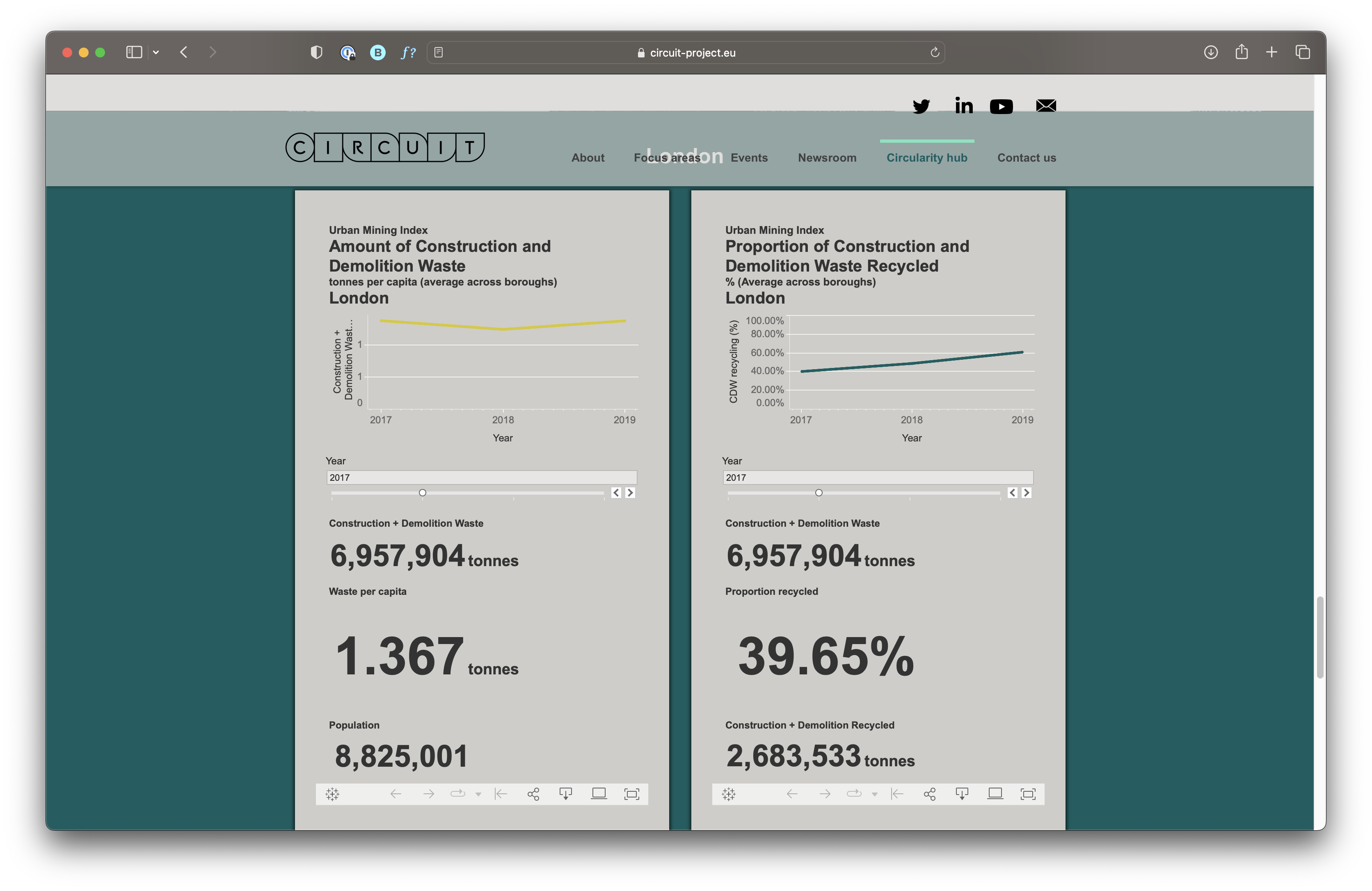 Currently, there is no standardised tool for visualising data that allows cities to easily showcase how they are performing in key areas relating to circularity within the built environment.
Currently, there is no standardised tool for visualising data that allows cities to easily showcase how they are performing in key areas relating to circularity within the built environment.
As a result, decision makers and built environment stakeholders such as urban planners lack accessible information that could help them make decisions and set targets that would accelerate circular activities.
In addition, a lack of accessible, visual data may be hampering circular construction because the supply chain and the public are unable to easily understand the environmental and economic benefits this approach delivers.
About the tool
The Circularity Dashboard is an online tool that visualises city-level indicators. A circularity indicator is a piece of information that can be used to measure performance within the built environment to guide decision making and enable the industry to communicate their circular economy actions in a consistent way. The indicators developed for this tool relate specifically to the circular economy within the built environment.
After carrying out comprehensive research on existing indicators and the needs of the stakeholders that will use them, five indicators were selected to feature on the Circularity Dashboard:
The amount of construction and demolition waste being generated within a city
The recycling rate of construction and demolition waste
The amount of refurbishment and transformation taking place relative to new construction
The overall demolition rate
The average age of demolished buildings
Another consideration that was central to selecting these indicators was the availability of data in a city, as this often determined whether it would be feasible to create an indicator.
This issue highlights the strong need to improve and standardise the collection and classification of data relating to circularity within the built environment. You can read more about this issue and potential solutions in the report titled Data and indicators for a circular built environment.
How the tool supports circular construction
Provides urban planners and policymakers with a quick overview of circular construction indicators in a city.
Offers a standardised method for benchmarking the circular economy performance of a city.
Helps urban planners and policy makers to highlight the benefits of circular construction.
Helps a city to set targets to reduce construction and demolition waste and increase the refurbishment or transformation of buildings.
Circularity indicators that feature on the Circularity Dashboard could be integrated into governance and development processes, helping to increase transparency and accountability.
Lessons learned during development
It can be difficult to illustrate the same indicator across different cities because of differences in data collection.
Dashboards need to be located in a place where decision makers already go to collect data to help ensure they see and use the overview provided.
Use circularity indicators in the monitoring of policies so city officials understand their application. This will also ensure dashboards remain helpful, active tools.
Circularity Atlas
circuit-project.eu/circularity-atlas
To combat the climate crisis, it is vital to include environmental factors in urban planning and decision making. Analysing and synthesising information like waste and demolition data can be an effective way to achieve this, as it can help built environment professionals understand a wider context and inform where actions will have the greatest impact.
About the tool
The Circularity Atlas is an interactive map of a city that combines circular economy data with satellite imagery provided by Copernicus, the Earth observation component of the EU’s space programme.
The Atlas allows users to click on buildings and locations on the map to instantly access circular economy information. For example, a Circularity Atlas was created for Copenhagen that provides information on demolition taking place across the city at a building-by-building level.
The Circularity Atlas may also combine geographical data, such as land use or land surface temperature, with other information such as social or health data. This can help professionals find potential connections between datasets that may help with evaluating materials’ usefulness or potential.
The Circularity Atlas is intended to supplement the data and information visualised on the Circularity Dashboard (see above).
How the tool supports circular construction
A Circularity Atlas allows stakeholders such as policy makers and urban planners to easily view and analyse circular economy data and other relevant data for a whole city.
With increased uptake of Circularity Atlases, it will be possible to easily compare circularity data across different cities.
Lessons learned during development
Similar to the Circularity Dashboard, it can be difficult to illustrate the same data across different cities because of differences in data collection.
Circularity Atlas maps need to be located in a place where decision makers already go to collect data to help ensure they see and use the overview provided.
How useful a Circularity Atlas is to a user is directly linked to the quality of the data that’s inputted into it. To collect better data inputs, communicate the value of spatially displaying data.
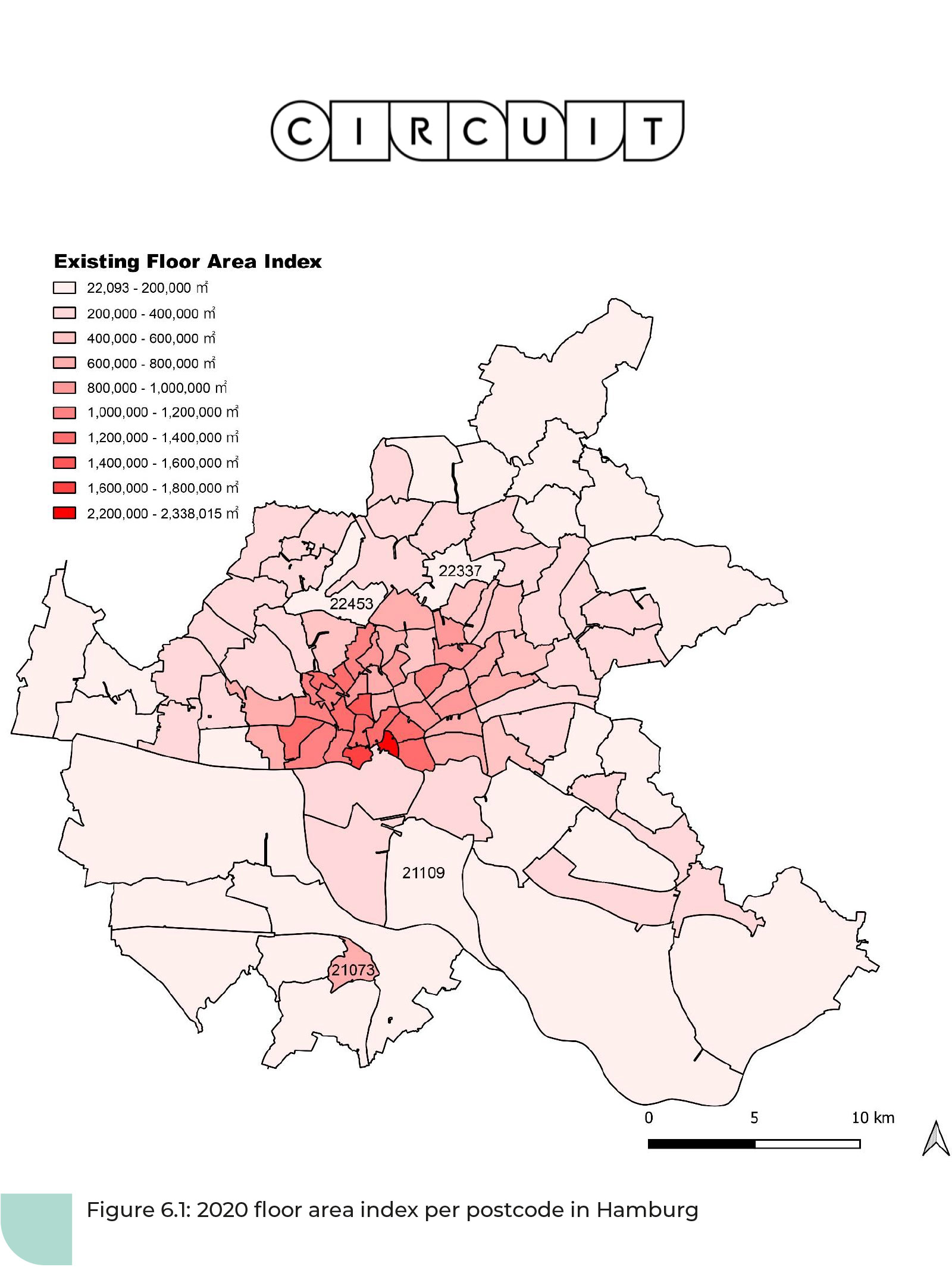 Citizen Engagement Portal
Citizen Engagement Portal
circuit-project.eu/citizen-engagement-portal
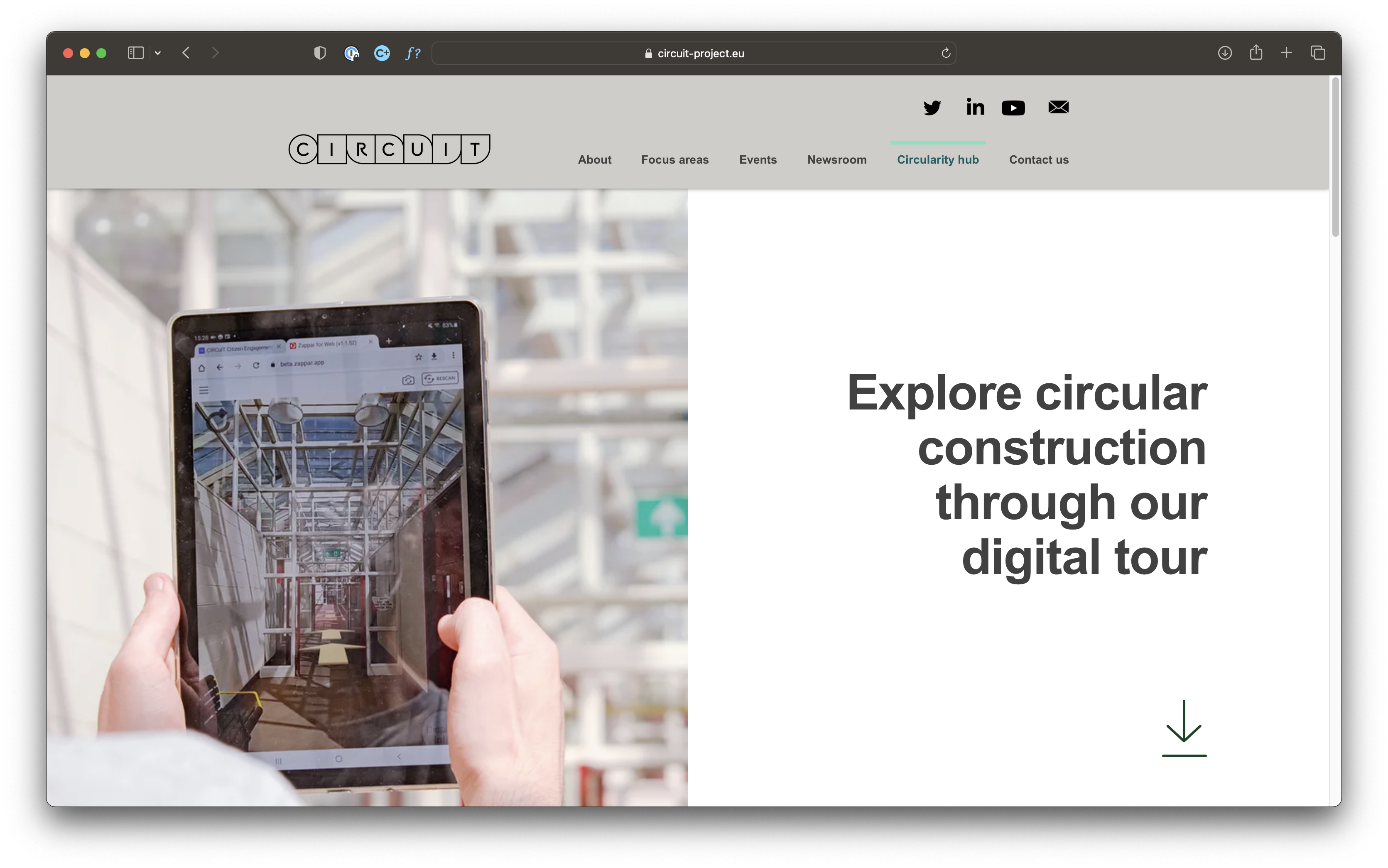 Residents typically have limited access to easy-to-understand examples of what circular construction looks like in practice, which can prevent understanding and buy-in.
Residents typically have limited access to easy-to-understand examples of what circular construction looks like in practice, which can prevent understanding and buy-in.
As a result, it’s important that best practices which showcase local circular construction projects are collected and shared to increase residents’ knowledge of circular construction.
Subsequently, this could lead to people becoming more involved with decisions about their local built environment and starting to champion circular construction by sharing their knowledge and best practice examples.
About the tool
Augmented reality (AR) is an interactive experience that combines the real-world and computer-generated content. Virtual reality (VR) is solely a computer-generated 3D environment with scenes and objects that appear to be real.
CIRCuIT partners identified that 3D technologies such as AR and VR offer cities a novel way to engage people, introduce circular construction best practices and increase their knowledge of this approach.
After considering the needs of potential users and available 3D technologies, a Citizen Engagement Portal was developed featuring two key elements:
A website portal that takes users on an online tour of buildings that have used circular construction approaches.
An augmented reality app that enables interactive experiences for users within buildings that have used circular construction approaches. This involves embedding QR codes at particular locations within a building and encouraging people to scan them on their phone or other mobile device.
Taking this action connects a user with building-specific circular construction information that’ s displayed over their real-world environment. This allows the user to see and interact with this information on their phone or mobile device.
For the CIRCuIT project, online tours and augmented reality experiences were created for the following buildings:
Konstabelskolen, Copenhagen
Konstabelskolen is a former school building that has been transformed into youth housing. It showcases how a clear design strategy can preserve the cultural importance and materials of a listed building while transforming it for different uses and modern specifications.
CRCLR House, Berlin
The CRCLR House is a former brewery that has been turned into a co-working and living space. The ambition for CRCLR House was to create a zero-waste building through the reuse and refurbishment of existing building materials.
Sortti Mini Station, Vantaa
The Helsinki Region Environmental Services authority (HSY) built a new information centre (Sortti Mini Station) in Koivukylä, Vantaa. The new centre showcases two aspects of circular construction: how to reuse existing building materials and how to design a building that is fully transferable and can easily be moved to another location in the future.
Hackney Depot, London
Hackney Depot is former derelict building that was transformed into a light industrial space for London’s creative community. It’s a stunning example of how a building can be refurbished in a way that meets the needs of a local population and preserves the rich history of the original building.
How the tool supports circular construction
Showcases circular construction best practice in existing or soon to be constructed buildings.
Creates a unique circular construction learning experience for users.
Helps to make circular construction approaches more accessible to a wide range of people.
Helps to increase demand for reusable materials by allaying concerns about the aesthetics of these materials.
Helps to bring to life projects that have transformed existing buildings by providing before and after 3D visualisations.
Lessons learned during development
Augmented (AR) and virtual reality (VR) apps are great ways to engage with the general public about circular construction. They draw interest and curiosity about a topic some people may not have previously known about or been interested in.
While AR and VR are exciting ways to bring circular construction to life, CIRCuIT partners found they worked best as a supplement to an in-person event, for example they could serve as a visual aid to an engaging talk. Partners also felt people were unlikely to try out AR or VR systems as a standalone experience .
There is great potential for AR and VR use in the professional sphere to illustrate circular concepts of upcoming building works.
Circular Economy Wiki
designingbuildings.co.uk/Circular_economy_wiki
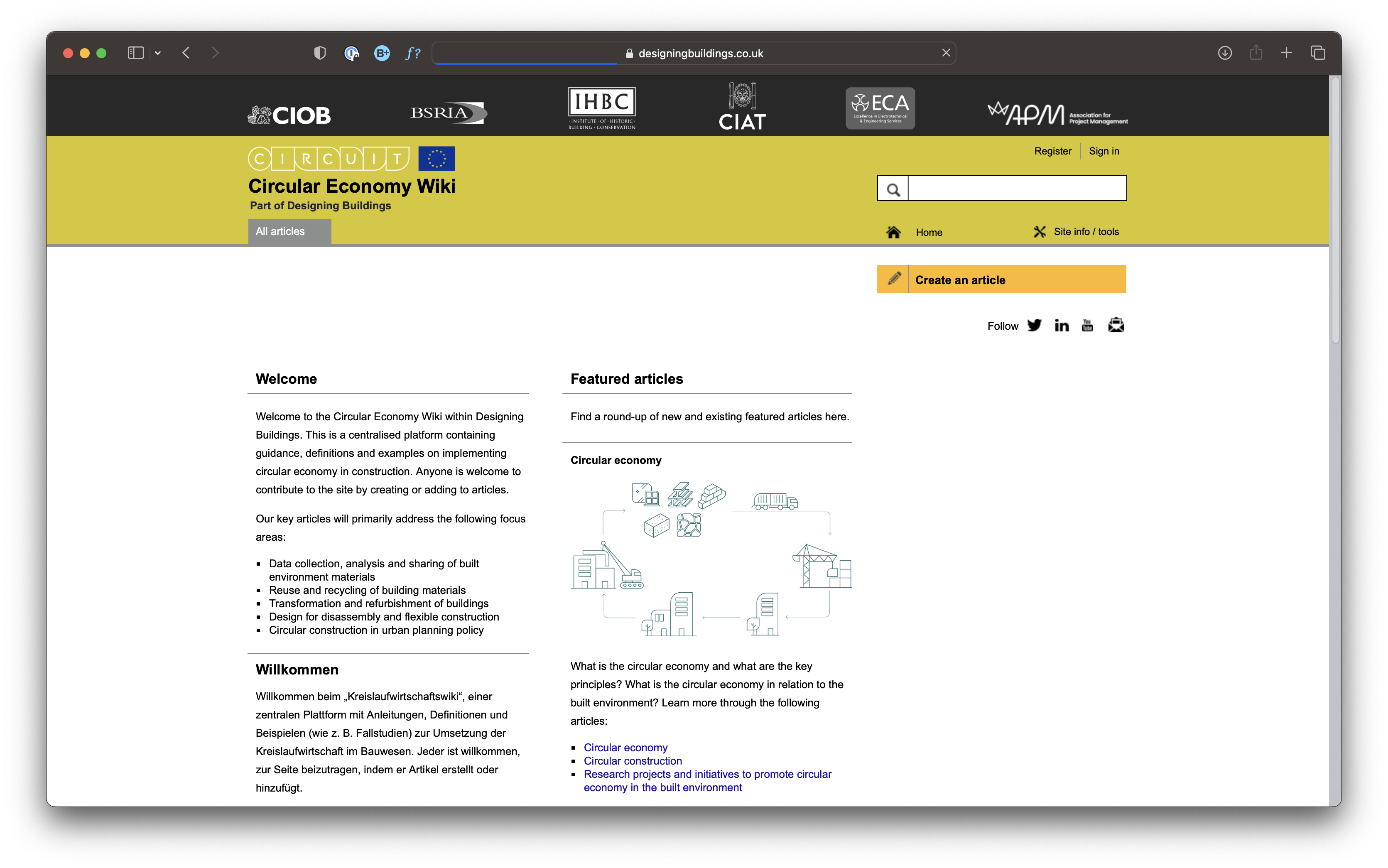 Built environment stakeholders, such as architects and urban planners, are becoming increasingly interested in circular construction and the environmental and economic benefits it can deliver.
Built environment stakeholders, such as architects and urban planners, are becoming increasingly interested in circular construction and the environmental and economic benefits it can deliver.
However, professionals need a common understanding of circular economy concepts to be able collaborate effectively and adapt at pace across the value chain.
As a result, cities need to provide their local built environment stakeholders with easy access to reliable information about all areas of circular construction and case studies that can help to bring this approach to life.
About the tool
The Circular Economy Wiki is a website that aims to inform and inspire stakeholders from the whole construction value chain.
The platform features guidance on implementing circular economy in construction, outlines definitions and lists of materials and products, and shares case studies that feature exciting examples of circular construction in practice.
Information on the site primarily focuses on:
data collection, analysis and sharing of built environment materials
reuse and recycling of building materials
transformation and refurbishment of buildings
design for disassembly and adaptability construction
circular construction in urban planning policy
The Circular Economy Wiki also provides the opportunity for users to create their own articles so they can share their circular construction experiences and best practice.
How the tool supports circular construction
Centralised platform where built environment stakeholders can easily find information about circular construction.
Excellent opportunity for parties involved in circular construction to share their knowledge and experiences with other stakeholders.
Search capability of the site allows users to quickly find the circular construction information they’re interested in.
Promotes circular construction best practice and what not to do when starting a circular construction project.
Lessons learnt during development
A Circular Economy Wiki is a great way to introduce the basics of circular construction to people who have little or no knowledge about the practice.
Regional wikis with specific entries about local policies and practices are necessary to transition built environment professionals from beginners to competent practitioners in circular construction. A general wiki approach will not capture the nuances necessary for achieving this transition in all cities.
Further reading
For further information about these outputs and the work behind them, please read the following reports, which were published by members of CIRCuIT partner organisations during the lifetime of the project.
D8.1 Report on the set up of Circularity Hub
D8.3 Report on using 3D for citizen engagement
D8.4 Report on the establishment of the Circularity Dashboard
D8.5 Materials Exchange Portal
D8.6 Public report on business model for the Circularity Hub
All these reports can be downloaded at circuit-project.eu/post/latest-circuit-reports-and-publications
Acknowledgements
The following individuals authored the deliverables that form the basis of this chapter.
Ana Julia Kuschmierz, The City of Hamburg
Andy Watts, Grimshaw Architects
Andrea Charlson, ReLondon
Antony Maubach-Howard, Hamburg University of Technology
Ben Cartwright, The Building Research Establishment/Reusefully Ltd
Cecilia Law, ReLondon
Colin Rose, ReLondon
Daniël Antony van Peer, The City of Copenhagen
Emil Møller Rasmussen, The City of Copenhagen
Graham English, ReLondon
Henna Teerihalme, Helsinki Region Environmental Services Authority
Ingrina Shieh, ReLondon
Janus zum Brock, Hamburg University of Technology
Jenni Nieminen, Helsinki Region Environmental Services Authority
Malene Højland Pedersen, The City of Copenhagen
Paris Nikitidis, Grimshaw Architects
Rachel Singer, ReLondon
Tessa Devreese, ReLondon
Thor Nyborg Bendsen, The City of Copenhagen
Tiina Haaspuro, Helsinki Region Environmental Services Authority
Image credits
Paris Nikitidis, Grimshaw Architects
